Foraging Guides
Can You Forage in State Parks? The Ultimate Guide!
You're just a step away from uncovering the secrets of foraging in state parks, but first, know the rules to avoid getting into trouble.
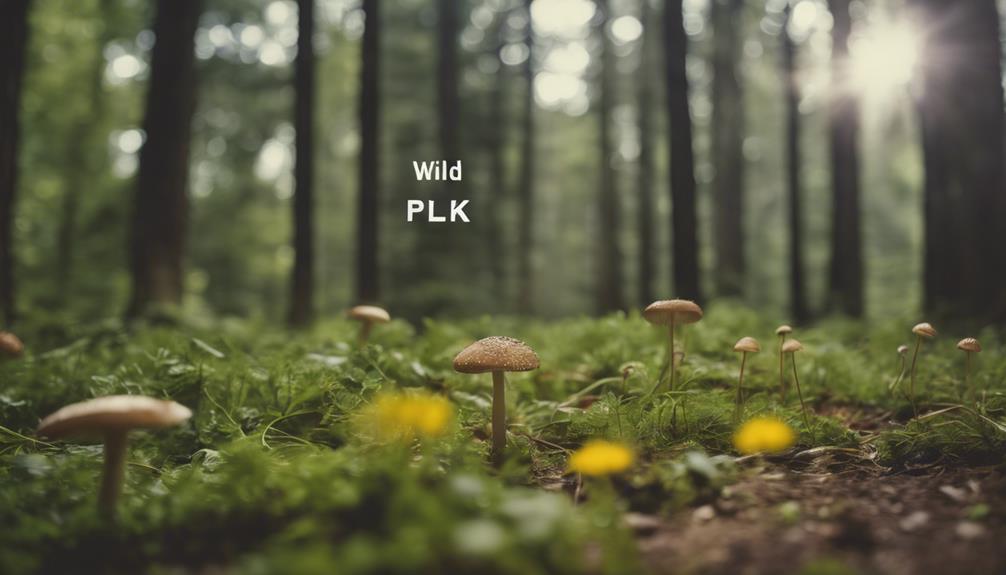
You can forage for wild edibles in state parks, but it's important to understand that regulations vary widely across parks, with some allowing limited foraging for personal use and others requiring permits or having specific restrictions in place. Checking specific rules and restrictions is essential, as trespassing on private property can lead to legal issues. Familiarizing yourself with park boundaries and obtaining permission for accessing private property is key. By understanding state park regulations and following sustainable foraging practices, you can enjoy the thrill of foraging while preserving the environment – and there's more to discover when you venture further.
Key Takeaways
- Regulations for foraging in state parks vary widely, and checking specific rules and restrictions is vital before foraging.
- Some state parks allow limited foraging for personal use, but permits may be required, and following park rangers' instructions is crucial.
- It is essential to understand the regulations before foraging in state parks, as national parks have different rules and guided walks focus on plant identification.
- Respecting private property boundaries is key, as not all lands within state parks are publicly accessible, and trespassing can lead to legal issues.
- Foraging in state parks requires careful attention to plant identification, sustainable practices, and adherence to harvest seasons and conservation efforts.
Understanding State Park Regulations
Prior to heading out to forage in a state park, it's important to familiarize yourself with the specific regulations governing foraging activities within that park. You wouldn't want to get in trouble for picking a wild berry or two without permission! State park regulations on foraging vary widely, with some parks allowing limited foraging for personal use, while others prohibit it entirely.
It's vital to check the specific rules and restrictions of each state park before engaging in any foraging activities. Some state parks may require permits for foraging, so make sure you're aware of any requirements beforehand. Remember, it's always better to err on the side of caution and respect the rules and regulations in place. By doing so, you'll not only avoid any potential trouble but also ensure the park's ecosystem remains protected for future generations.
Always follow the instructions of park rangers and take the time to understand the regulations governing foraging in the state park you plan to visit.
Identifying Edible Plants Safely
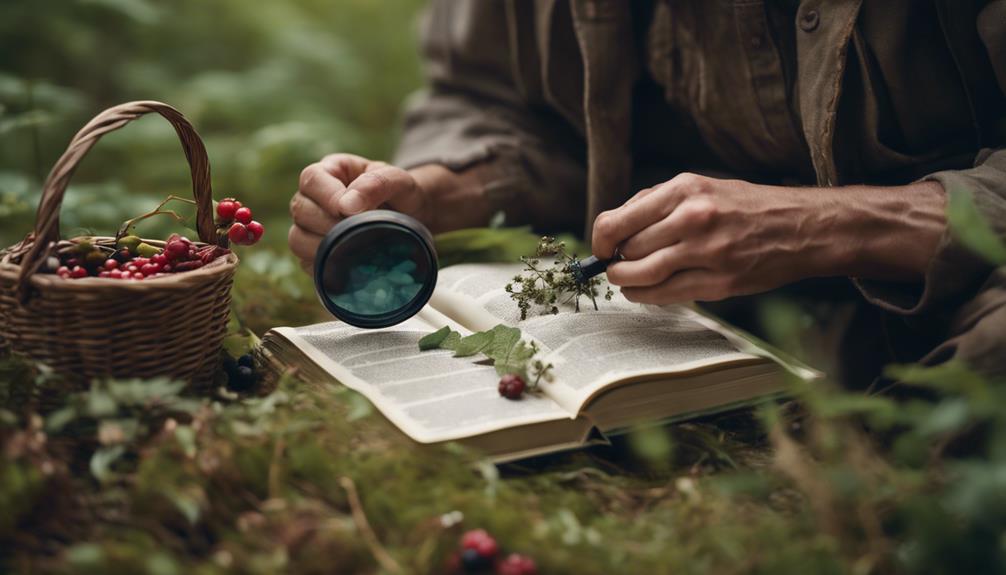
As you prepare to forage in state parks, it's important to shift your focus from understanding regulations to identifying edible plants safely, a task that demands careful attention to detail and dedication to accurate identification.
You'll need to study the characteristics, growth patterns, and common lookalikes of wild plants to make sure you're picking edibles, not toxic ones. Reputable field guides, online resources, and foraging classes can enhance your plant identification skills.
Look for key features like leaf shape, color, arrangement, and any distinct markings to differentiate edible plants from toxic ones. Pay attention to plant habitats, seasonal variations, and growth stages to accurately identify edible plants in the wild.
When in doubt, consult with experienced foragers, botanists, or local experts to confirm the safety and edibility of wild plants. By mastering these foraging techniques, you'll be able to identify edibles with confidence and enjoy the fruits of your labor.
Sustainable Foraging Practices Matter
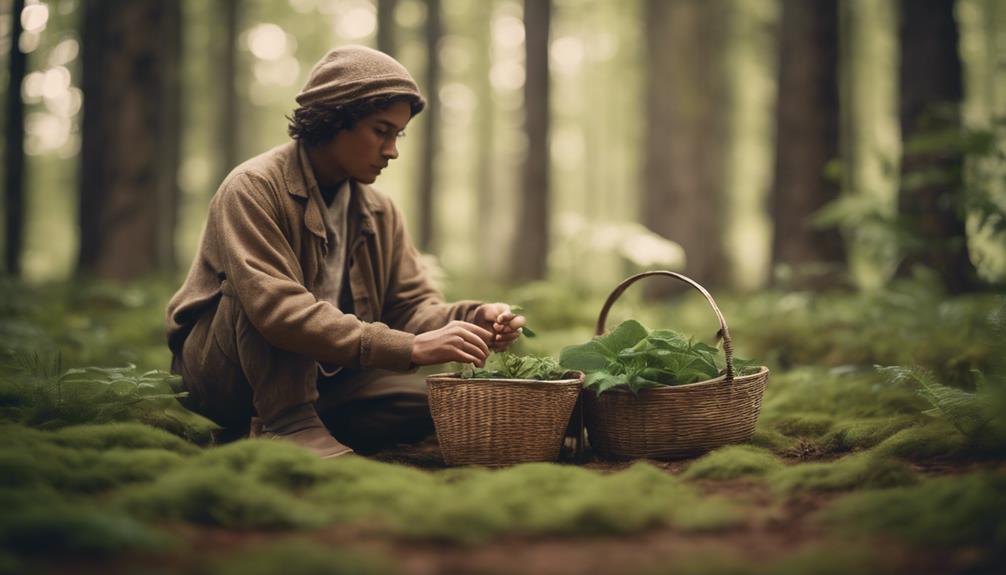
As you venture into state parks for foraging, remember that sustainable practices are essential to preserving the natural balance.
You play an important role in maintaining the ecosystem's harmony by adopting mindful harvesting techniques and respecting the land.
Respect the Land
By venturing into state parks, you're not only a forager, but also a temporary steward of the land, responsible for preserving its natural beauty and ecological balance.
As you explore, remember that respecting the land is essential. This means avoiding private property and adhering to regulations surrounding foraging in state parks. When foraging, stick to designated trails and areas to minimize your impact on the environment.
Be mindful of the plants you're collecting, making sure you're not over-foraging, which can disrupt the delicate balance of plant populations and harm the ecosystem.
Leave no trace by avoiding damage to plants, soil, and wildlife habitats. This will help preserve the natural resources for future generations.
Remember, respecting the environment is key to sustainable foraging. By following these guidelines, you'll not only guarantee the longevity of the ecosystem but also ensure a continued foraging experience in state parks.
Mindful Harvesting
When you forage in state parks, you're not just collecting wild edibles, you're also making a conscious decision to preserve the delicate balance of the ecosystem. By practicing mindful harvesting, you're ensuring the long-term health of the environment. This means adopting sustainable foraging practices that prioritize responsible and ethical guidelines.
Here are some key principles to keep in mind:
- Take only what you need, leaving enough for wildlife and future foragers.
- Avoid over-harvesting, respecting plant life cycles and avoiding damage to the ecosystem.
- Be aware of regulations and respect protected areas, ensuring the preservation of natural resources.
State Park Ecosystems and Habitats
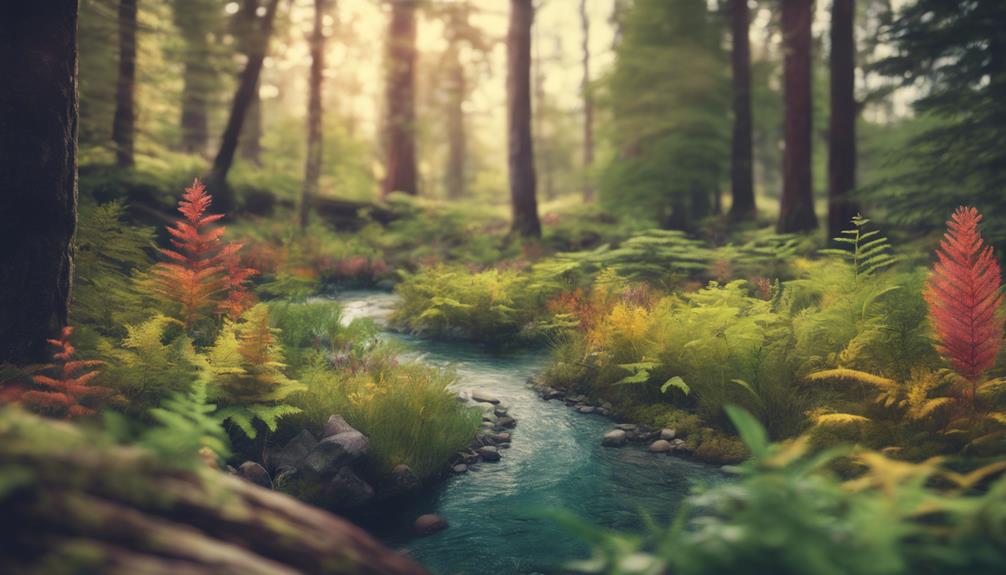
You'll find that state parks in the US encompass an astonishing array of ecosystems, from lush forests to fragile wetlands, arid deserts, and scenic coastlines. As you explore these diverse ecosystems, you'll discover an incredible variety of habitats, each supporting a unique array of plant and animal species.
Foragers in the South, for instance, can find an abundance of edible plants, from wild berries to medicinal herbs, in the region's humid subtropical forests. When foraging in state parks, you'll encounter protected species, too, like the endangered gopher tortoise, which calls Florida's scrub habitats home.
As you wander through these ecosystems, keep in mind that each park has its own unique flora and fauna, shaped by local climate, soil, and geography. This diversity creates a rich foraging experience, with opportunities to discover new edible delights around every corner.
From the towering trees of the Pacific Northwest to the sun-baked dunes of the Southwest, state parks offer an unparalleled opportunity to explore and learn about the natural world.
Respecting Private Property Boundaries

As you venture into state parks to forage, it's important to recognize that not all lands within the park's boundaries are publicly accessible, and respecting private property boundaries becomes a key aspect of responsible foraging.
You must be aware that some areas within the park may be privately owned, and trespassing can lead to legal issues.
To avoid any problems, follow these guidelines:
- Stay on designated trails and avoid crossing into private property while foraging in state parks.
- Familiarize yourself with park maps and boundaries to make sure you stay within public land while foraging.
- Always obtain permission from landowners if you need to cross private property to access state park foraging areas.
National Park Foraging Restrictions
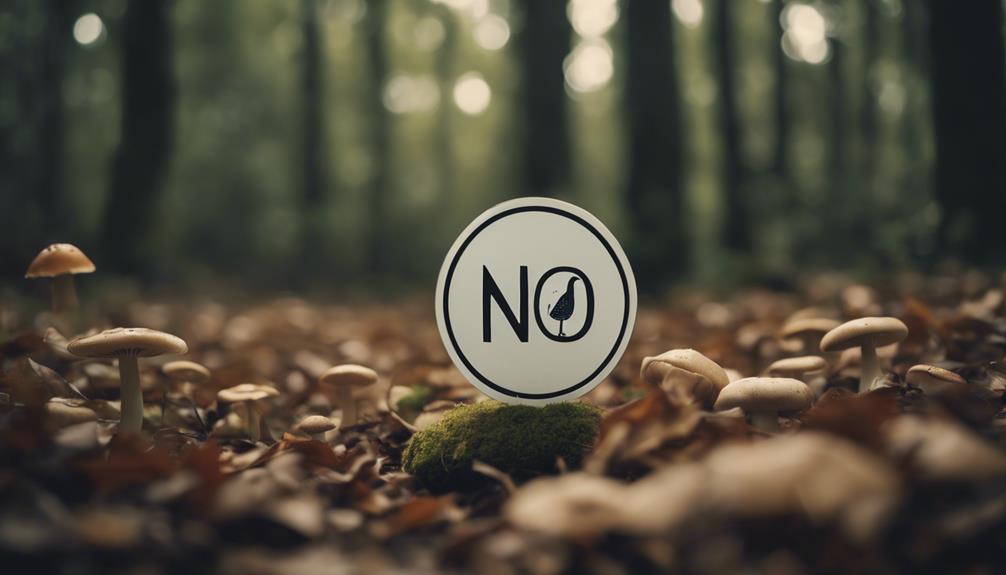
When you plan to forage in a National Park, you'll need to familiarize yourself with federal regulations that apply to these protected areas.
You may find that some parks require permits for collecting wild edibles, so it's crucial to research the specific rules for the park you'll be visiting.
Federal Regulations Apply
Federal regulations strictly prohibit foraging in national parks, prioritizing the preservation of delicate ecosystems over individual desires to gather wild edibles. You might be surprised to learn that even picking wildflowers is off-limits in these protected areas. The regulations regarding foraging in national parks are in place to prevent damage to plant populations and maintain the natural balance of the ecosystem.
Here are some key points to keep in mind:
- Federal regulations take precedence over individual desires to forage for wild edibles in national parks.
- Some national parks may allow limited collection of wild edibles for personal use, but these instances are rare and heavily regulated.
- It's important to research and understand the specific rules and restrictions regarding foraging in national parks before attempting to gather any wild edibles.
Permits Often Required
You may need to obtain a permit before foraging in state parks, as many of them have specific regulations in place to guarantee the conservation of their natural resources. These regulations vary from park to park, so it's important to research the policies of the state park you plan to visit. Some parks may allow limited foraging for personal use with the proper permits, while others may prohibit it altogether.
| Park Type | Permit Required | Foraging Allowed |
|---|---|---|
| National Parks | Yes | No |
| State Parks | Maybe | Limited |
| Guided Walks | No | No |
In national parks, guided walks focus on plant identification rather than foraging. Remember, it's crucial to understand the regulations and permissions for foraging in state parks. Always research the park's policies before heading out to forage. Don't assume that what's allowed in one park is allowed in another. By doing your due diligence, you can ensure a safe and enjoyable foraging experience while preserving the natural beauty of our state parks.
Regional Foraging Guides and Maps

Regional foraging guides and maps are essential tools that provide valuable insights into the diverse ecosystems within state parks, empowering you to plan your trips and identify safe and legal foraging spots. These resources offer detailed information on edible plants, foraging regulations, and sustainable practices, guaranteeing you're well-prepared for your foraging adventure.
By using regional foraging guides and maps, you can:
- Identify areas with an abundance of edible plants, such as berry patches or mushroom hotspots
- Understand local regulations and permits required for foraging in specific state parks
- Learn about sustainable practices to secure the long-term health of the ecosystems you're foraging in
With these guides and maps, you'll be able to explore the natural bounty of state parks while adhering to local laws and sustainable practices. By doing so, you'll not only enjoy a successful foraging trip but also contribute to the conservation of these precious natural resources.
Harvest Seasons and Conservation
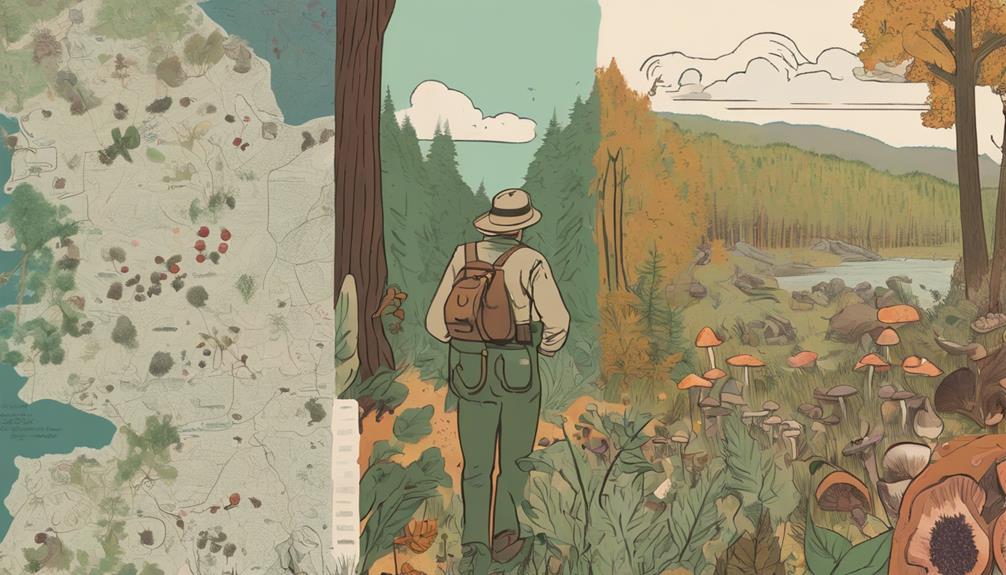
State parks implement specific harvest seasons to safeguard plant populations, ensuring that foragers like you can collect responsibly and sustainably. By understanding these harvest seasons, you can contribute to the conservation of state parks' natural resources.
Conservation efforts in state parks aim to maintain biodiversity and prevent over-harvesting, allowing for the long-term health of ecosystems and preserving future foraging opportunities.
When foraging in state parks, it's important to follow guidelines and regulations to preserve natural resources. You should familiarize yourself with the park's rules and restrictions on foraging, as they vary from park to park.
By doing so, you'll be supporting the conservation practices in state parks, which are necessary for maintaining the delicate balance of ecosystems. Remember, responsible foraging is key to ensuring the continued availability of wild edibles in state parks.
Foraging Ethics and Safety Guidelines
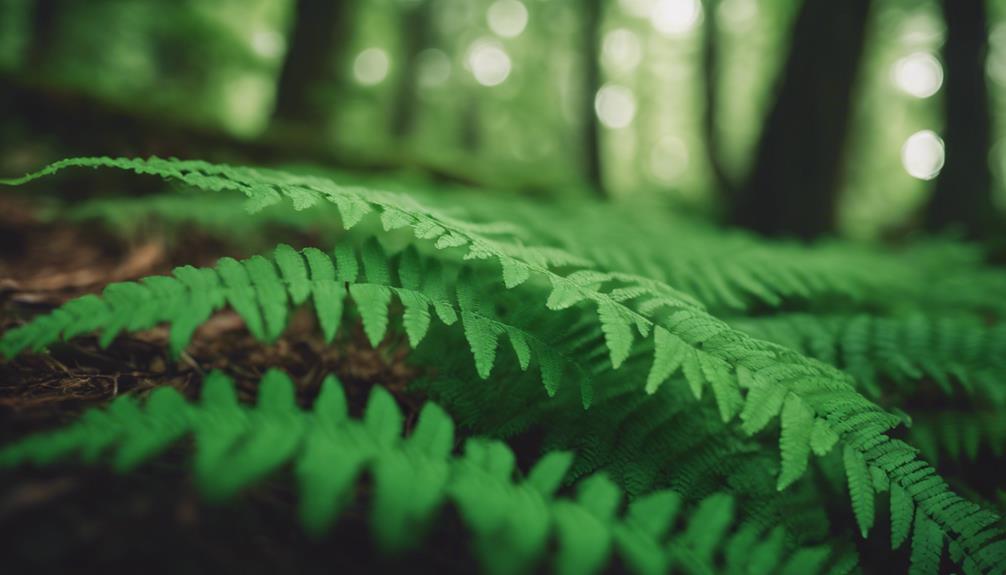
Responsible foraging in state parks demands adherence to a set of ethics and safety guidelines to guarantee a positive experience for both humans and the environment. By following these guidelines, you can confirm a safe and enjoyable foraging experience while preserving the natural environment.
To get started, remember these essential foraging ethics and safety guidelines:
- Respect park regulations: Always follow park rules and guidelines for ethical foraging practices to avoid fines or penalties.
- Preserve the environment: Leave no trace while foraging in state parks to maintain the natural environment and protect wildlife habitats.
- Prioritize safety: Stay safe by properly identifying plants, avoiding toxic lookalikes, and using tools safely to avoid accidents.
Plant Identification and Classification
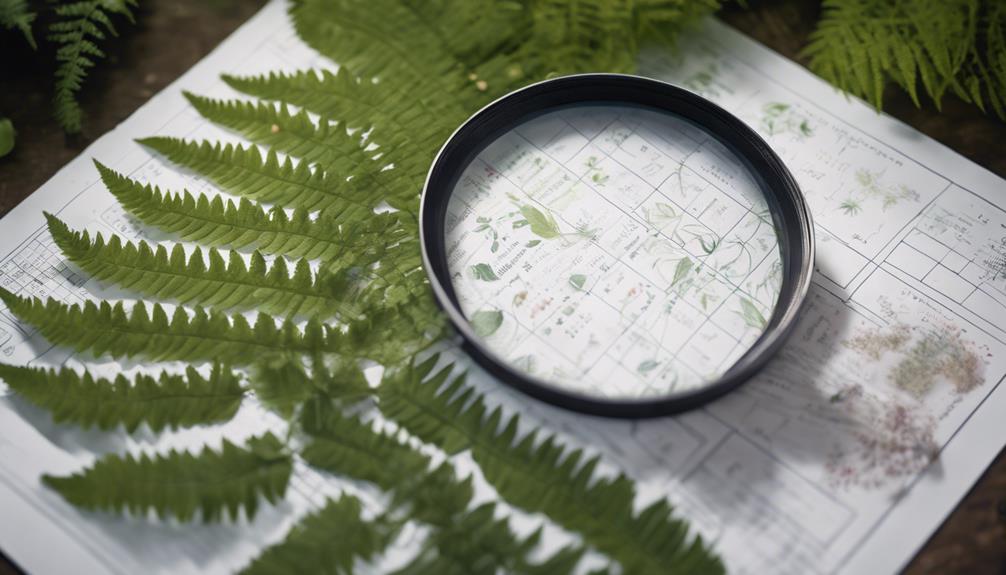
As you venture into the world of foraging in state parks, accurately identifying the plants you come across becomes an essential skill, and understanding plant classification is key to making that happen.
Plant identification involves learning to distinguish edible plants from toxic ones based on key characteristics, such as leaf shape, color, and arrangement. Understanding plant classification helps you identify species based on their scientific names, families, and characteristics.
For instance, knowing that a plant belongs to the carrot family (Apiaceae) can help you identify it as edible or toxic.
Foraging activities rely heavily on your ability to classify plants into groups like herbs, shrubs, trees, and vines, making it easier to organize and identify foraged species.
Knowledge of plant families also assists in grouping similar plants together for easier identification during foraging activities.
To aid in plant identification and classification, you can use field guides, apps, and resources that provide detailed descriptions and images of various plant species.
Frequently Asked Questions
Can You Forage in Local Parks?
You'll need to check with local park authorities or websites to see if foraging is allowed, as rules vary by location, and adhere to any posted signs or guidelines to promote sustainable foraging in local parks.
Can You Forage in MN State Parks?
You're wondering if you can forage in MN state parks – generally, the answer is no, unless you have a permit, but some parks allow limited personal use foraging, so it's best to check with park authorities for specific rules.
What States Is Foraging Legal In?
You'll find that foraging laws vary state by state, but some states like Texas and Arkansas allow it with restrictions, while others like California prohibit it; always check local regulations before you head out to forage.
Can You Forage in Michigan State Parks?
You'll be surprised to know that Michigan has over 100 state parks! Unfortunately, you can't forage in them, as it's generally prohibited to protect the ecosystem and wildlife, with specific rules varying by location.
Conclusion
As you stand in a state park, surrounded by nature's bounty, remember that foraging is a privilege, not a right.
The wild edibles you seek are nestled among protected ecosystems, private property boundaries, and conservation efforts.
By respecting these boundaries and adopting sustainable practices, you'll guarantee the land's integrity and your own safety.
Harvest wisely, and the forest will continue to flourish, its secrets waiting to be uncovered.
Foraging Guides
Can You Make Money Foraging? Here's How!
Profit from your passion for foraging by turning your hobby into a lucrative income source, but first, learn the strategies to succeed.
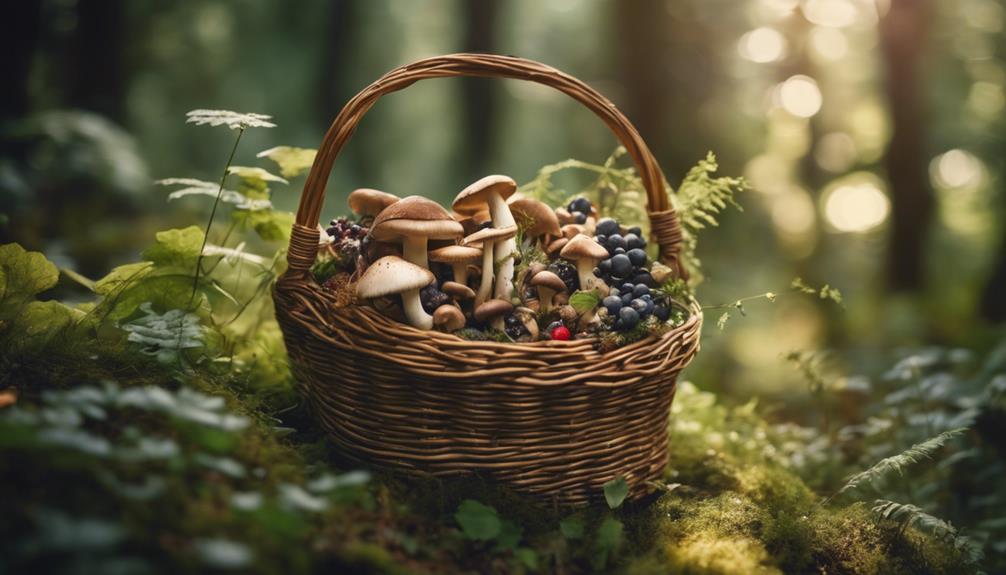
To guarantee a successful and sustainable business, staying informed about local regulations, sustainable practices, and market demand is crucial when turning your foraging hobby into a profitable venture. You can earn up to $40,000 or more per year by selling wild mushrooms, berries, and other edibles to high-end restaurants and specialty food stores. To monetize your foraging activities, you can sell wild goods online, create value-added products like jams and spice blends, or teach foraging classes. By following the right strategies, you can transform your passion into a lucrative income source and explore the world of profitable foraging – and there's more to discover.
Key Takeaways
- Foraging can be turned into a profitable venture, but it requires motivation, expert guidance, and a balance between financial aspects and education.
- Selling wild mushrooms, creating value-added products, teaching foraging classes, and hosting events are potential avenues for monetizing foraging activities.
- Online platforms like Etsy and eBay can connect foragers with a global customer base, providing a wider audience reach and scalability.
- Building a successful foraging business model involves pinpointing sought-after wild edibles, researching local regulations, and identifying target markets.
- Diversifying marketing channels, investing in harvesting tools, and implementing sustainable practices are crucial for scaling up a foraging operation.
Foraging for Profit: Is It Possible?
As you explore the world of foraging, you might wonder: can you really turn this hobby into a profitable venture, or is it just a passionate pursuit? The answer is, it's possible, but it's not a guarantee. Some individuals have successfully monetized their foraging activities, but it's important to understand that not everyone makes a substantial income from it.
Your motivation for foraging plays a significant role in determining your approach. Are you in it for the money, or is it about connecting with nature and living sustainably?
If making money foraging is your goal, it's vital to approach it responsibly. You'll need to seek expert guidance to make sure you're harvesting wild foods safely and sustainably. Remember, foraging for profit requires balancing the financial aspect with education and enjoyment of the practice. It's not just about making money; it's about respecting the environment and the craft itself.
Monetizing Wild Foods: Opportunities
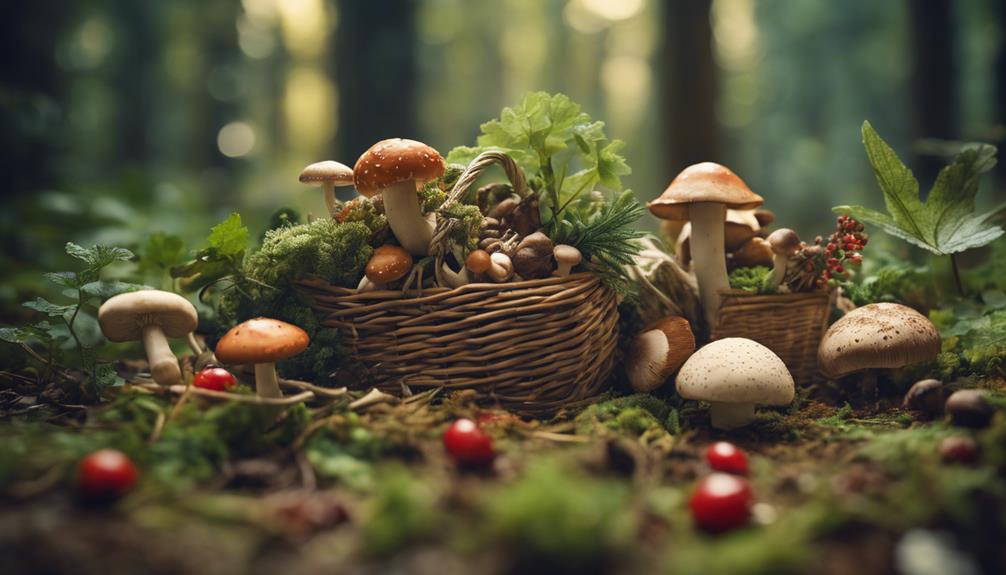
To capitalize on the growing demand for wild foods, it's crucial to explore various monetization opportunities that align with your skills and interests.
For instance, you could sell wild mushrooms to local restaurants or markets, taking advantage of the increasing popularity of foraged ingredients.
If you're skilled in the kitchen, consider creating value-added products like jams, sauces, or spice blends featuring your foraged finds.
You might also teach foraging classes, write a book about wild edibles, or host wild food events.
Whatever route you choose, staying informed about local regulations, sustainable harvesting practices, and market demand for wild foods is key.
By doing so, you can turn your passion into a sustainable income source while promoting a deeper connection to nature and local ecosystems.
As you explore these opportunities, remember to focus on your strengths and interests, and don't be afraid to get creative and innovative in your approach.
Selling Foraged Goods Online
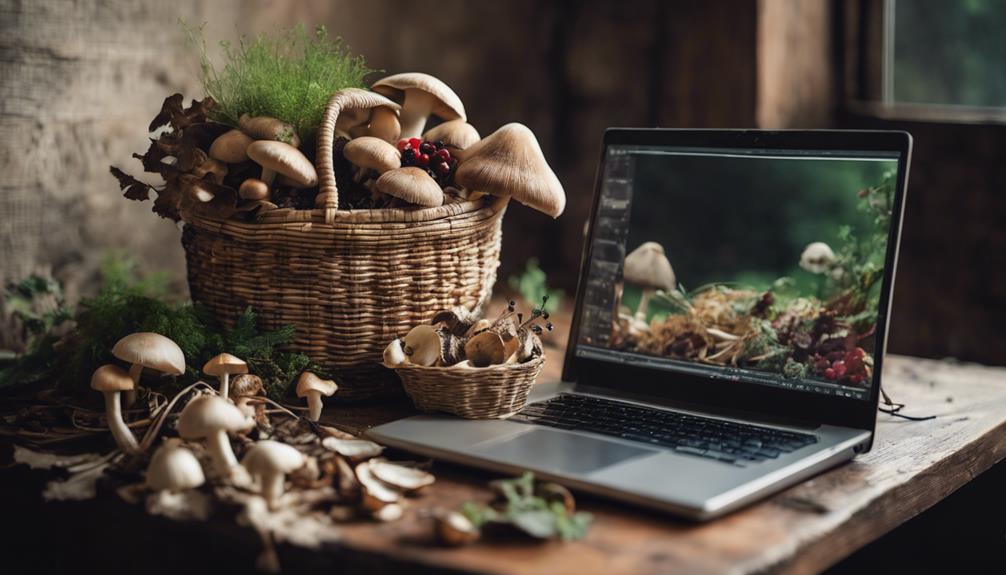
When you're selling foraged goods online, you'll want to focus on three key areas to guarantee success.
First, you'll need to choose the right online marketplaces to showcase your products.
Then, you'll need to take high-quality photos that make them look appealing.
Online Marketplaces Matter
Online marketplaces provide foragers with a digital storefront to showcase their wild-harvested treasures, connecting them with customers enthusiastic to buy unique, hard-to-find ingredients. You can now access a global customer base, transcending local boundaries and opening up new revenue streams.
When you sell on online marketplaces, you're in control. You set the prices, create listings, and ship products to customers. Popular platforms like Etsy, eBay, and specialized foraging websites make it easy to get started.
Here are some benefits of selling on online marketplaces:
- Reach a wider audience: Online platforms connect you with customers worldwide, increasing your chances of selling your foraged goods.
- Convenience: You can manage your sales, prices, and inventory from a single dashboard, making it easy to scale your business.
- Scalability: Online marketplaces provide a platform for you to grow your business, handling increased demand and sales with ease.
Product Photography Counts
High-quality product photography is essential for selling foraged goods online, as it allows potential buyers to inspect the products in detail, increasing trust and interest in the items. When selling wild food online, you want to showcase the unique features and freshness of your foraged goods. Clear, well-lit images can make all the difference in attracting potential buyers.
Here are some tips for taking professional-looking product photos:
| Tip | Description | Example |
|---|---|---|
| Use natural light | Take photos near a window or outside | Avoid harsh shadows |
| Showcase details | Take close-up shots of the foraged goods | Highlight unique features |
| Use a clean background | Avoid cluttered or distracting backgrounds | Focus on the product |
| Consider styling | Add some greenery or props to enhance the image | Create an appealing scene |
| Edit your photos | Adjust brightness and contrast for a professional look | Make the image pop |
Packaging Is Everything
Now that you've perfected your product photography, it's time to think about how you'll package your foraged goods to make a great first impression on potential customers. Packaging is everything when it comes to selling foraged goods online. It's not just about throwing your products into a box and shipping them out.
No, the packaging itself is an essential part of the marketing and selling process.
Here are a few things to keep in mind when designing your packaging:
- Make it eye-catching: Use colors, patterns, and designs that will grab people's attention and make them want to learn more about your products.
- Make it informative: Include details about the product, such as ingredients, instructions, and any relevant warnings or cautions.
- Make it professional: Use high-quality materials and design elements to convey a sense of expertise and credibility.
Building a Foraging Business Model
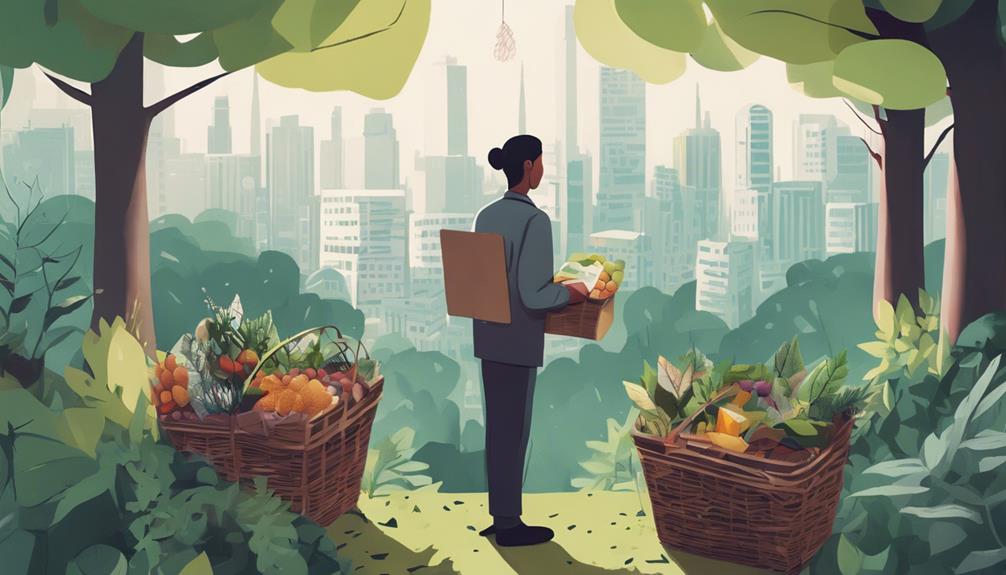
When building a foraging business model, you'll need to identify profitable products to sell, and that means understanding what buyers want.
You'll want to focus on marketing wild edibles that are in high demand, such as rare mushrooms or hard-to-find herbs.
Identifying Profitable Products
As you venture into the world of foraging for profit, pinpointing the most sought-after wild edibles, such as prized mushrooms, juicy berries, and coveted edible plants, is essential to building a successful business model. Identifying profitable products is crucial to your foraging business, as it directly impacts your bottom line.
You'll want to focus on high-demand wild foods that are sought after by restaurants, farmers' markets, and specialty food stores. Here are some key considerations:
- Research local regulations and permits to make sure you're legally foraging and selling wild foods for profit.
- Understand market trends and consumer preferences to pinpoint the most profitable wild-harvested products.
- Develop a sustainable harvesting plan to guarantee the long-term viability of your foraging business and protect natural resources.
Marketing Wild Edibles
With your profitable products identified, you're ready to build a marketing strategy that connects your wild edibles with enthusiastic buyers. A key step is identifying your target markets, such as direct-to-consumer sales, restaurants, or food businesses. You can create value-added products like jams, teas, or spice blends to appeal to a wider customer base.
| Marketing Channel | Description | Benefits |
|---|---|---|
| Online Presence | Website, social media, or YouTube channel | Global reach, cost-effective |
| Local Markets | Farmers markets, food festivals | Local visibility, customer engagement |
| Direct Sales | Direct-to-consumer sales, email marketing | Personal connection, targeted marketing |
| Wholesale | Selling to restaurants, food businesses | Volume sales, stable revenue |
Establishing a strong online presence through a website or social media can help you reach a broader audience. Creating a YouTube channel focused on foraging and cooking with wild edibles can also attract customers. Additionally, collaborating with local farmers markets or food festivals can help promote your products and build a loyal customer base. By diversifying your marketing channels, you can increase your chances of success in the wild edibles market.
Creating Value-Added Products
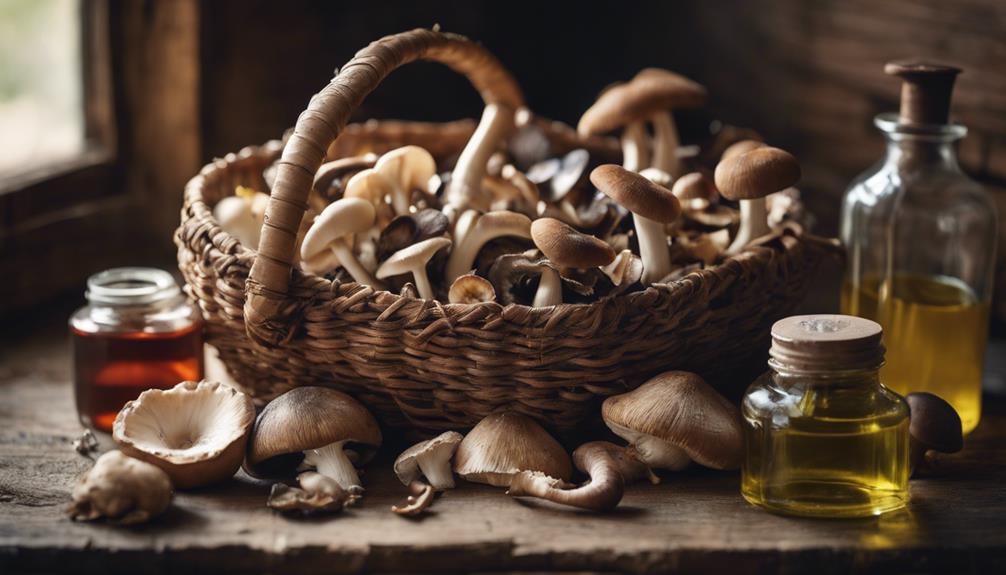
How can you transform your foraged finds into lucrative value-added products that command a premium in the market? By creating value-added products, you can increase the profitability of your foraged goods and appeal to customers seeking unique and artisanal goods.
You can create a variety of value-added products, such as:
- Jams and jellies made from foraged fruits like wild berries or rose hips
- Teas and infusions using dried herbs and botanicals
- Seasoning blends featuring foraged ingredients like wild garlic or mushrooms
Scaling Up Your Foraging Operation
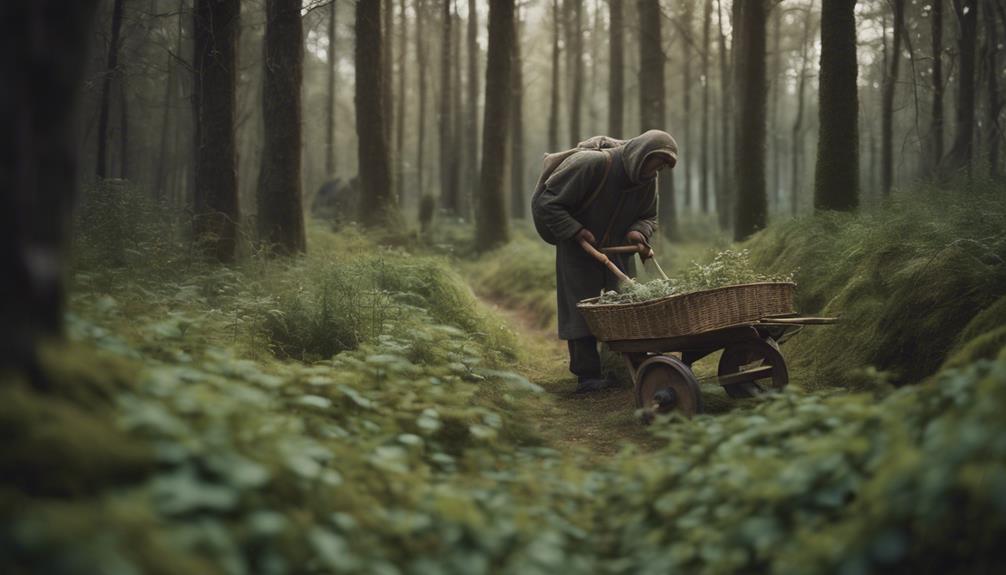
You've successfully transformed your foraged goods into value-added products, and now it's time to take your foraging operation to the next level.
Scaling up your operation can greatly increase your profits, and there are several ways to do so. One approach is to expand your foraging areas or form partnerships with other foragers to harvest a large number of wild edibles. This won't only boost your yield but also allow you to diversify your product offerings.
Developing relationships with buyers and exploring niche markets for wild foods can also enhance your income. Additionally, investing in equipment like harvesting tools and transportation can improve efficiency and profitability in your foraging operations.
To guarantee long-term success, it's crucial to implement sustainable harvesting practices that protect the environment and conserve natural resources. By scaling up your operation strategically, you can increase your earnings and establish a thriving foraging business.
Frequently Asked Questions
How Much Money Do Foragers Make?
You're wondering how much money foragers make? Well, experienced foragers like Randy Riley can earn between $100 to $300 daily, depending on the items they collect and sell to licensed buyers.
How Much Do Mushroom Foragers Make?
You'll earn an average of $100 to $300 daily as a mushroom forager, depending on your finds, just like Randy Riley in Oregon who gets cash payments from licensed buyers for his harvests.
Is Foraging Illegal in the Us?
As you venture into the wild, beware: foraging isn't a free-for-all in the US. You'll need to navigate a tangled web of regulations, as laws vary by state and locality, and violating them can lead to fines and penalties.
What Is the Golden Rule of Foraging?
You must remember the golden rule of foraging: always positively identify plants before consuming them to avoid health risks, and never rely on a single source for identification, ensuring a safe and rewarding experience.
Conclusion
As you venture into the world of foraging for profit, remember that it's not just about picking wild edibles, but about creating a sustainable business model. Like a mushroom that grows in the dark, your foraging operation can flourish with the right strategies in place.
According to a USDA study, the wild mushroom industry alone generates over $40 million annually. By building a solid business plan, creating value-added products, and scaling up your operation, you can turn your foraging passion into a lucrative venture.
Foraging Guides
Can You Live Off Foraging? The Ultimate Survival Guide!
Finding edible plants is just the beginning, but can you survive the wilderness without the right skills and knowledge?
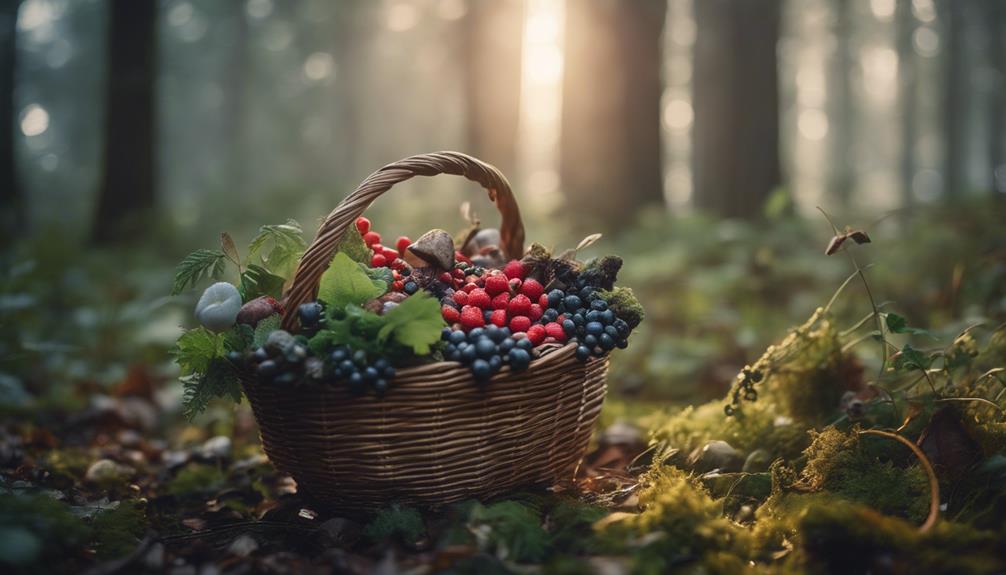
You can survive off foraging, but it takes more than just knowing which plants are edible. To truly thrive, you need a range of wilderness skills, including building shelters, sourcing and purifying water, starting fires, and orienteering in unfamiliar terrain. It's not just about finding food, but also about creating a safe and sustainable environment. By mastering these essential skills, you'll be better equipped to face the challenges of living off the land. As you prepare for your wilderness adventure, remember that every skill builds upon the last, and a solid foundation is key to staying alive – and that's just the beginning.
Key Takeaways
- Learn to identify edible wild plants through distinct characteristics to ensure a balanced diet in a survival situation.
- Practice caution and research thoroughly before consuming any wild plants to avoid poisoning.
- Master foraging skills by starting with commonly found edible plants like dandelions and cattails.
- Understand the nutritional value of different plants to create a well-rounded diet.
- Combine foraging with other survival skills like shelter building, water sourcing, and fire starting for long-term wilderness survival.
Identifying Edible Wild Plants
To guarantee a safe and nutritious foraging experience, start by learning to identify edible wild plants through their distinct characteristics, such as leaf shape, color, and growth pattern. This is important in ensuring foraging safety and avoiding potential harm.
When venturing into the world of wild edibles, it's vital to understand the nutritional value of different plants to maintain a balanced diet. You can use guides or apps to assist in plant identification, especially when you're just starting out.
Begin with commonly found edible plants like dandelions, cattails, or stinging nettles, which are relatively easy to identify. Practice caution and research thoroughly before consuming any wild plants. Remember, it's always better to err on the side of caution when it comes to foraging.
This survival guide aims to provide you with the necessary knowledge to confidently identify and harvest edible wild plants, ensuring a safe and nutritious foraging experience. By following these guidelines, you'll be well on your way to living off the land and enjoying the many benefits that foraging has to offer.
Building Shelters and Snares
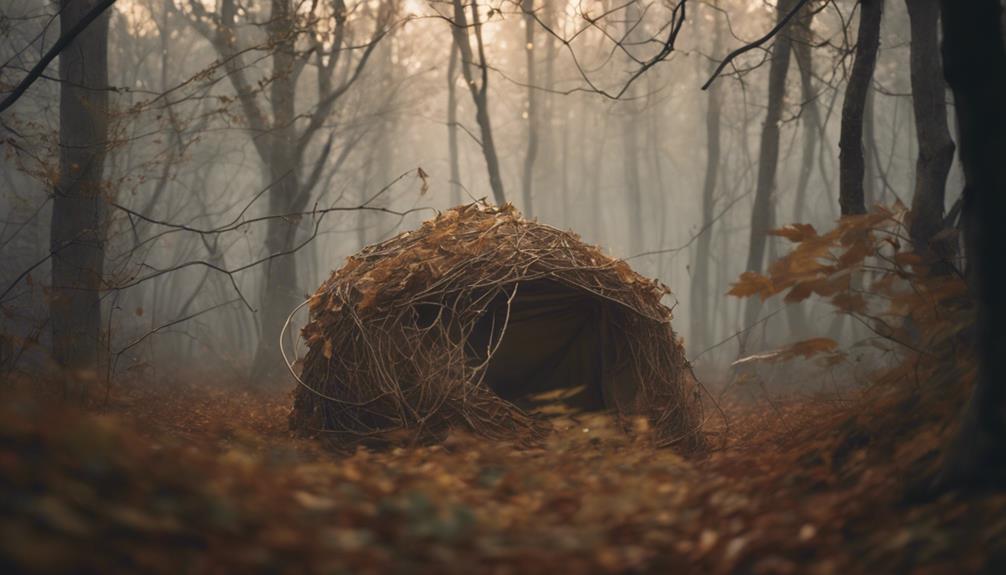
As you've mastered the art of identifying edible wild plants, you're now ready to focus on building shelters and snares that'll protect you from the elements and provide a steady food source. In wilderness survival, shelter building is vital to protecting yourself from harsh weather conditions. You can use natural features like rock outcrops and sand dunes to aid in construction. Basic survival skills like fire-starting and water tracking are essential in conjunction with shelter building.
Here are some shelter building techniques and snaring methods to keep in mind:
| Shelter Type | Description |
|---|---|
| Debris Hut | Uses branches and leaves for insulation and protection |
| Lean-To | Simple, quick shelter using a sloping branch and debris |
| Snow Pit | Dug into a snowbank for protection from wind and cold |
| Snare | Catch small game for sustenance using natural materials |
| Deadfall Trap | Weighted trap that falls on prey, providing a food source |
Water Sourcing and Purification
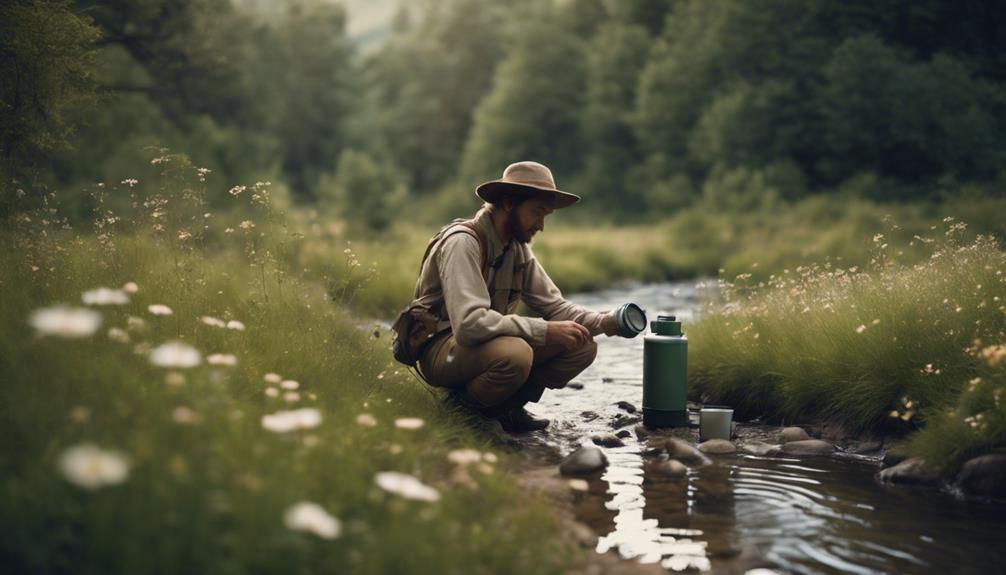
You'll need to rely on natural sources like rivers, streams, lakes, and even dew to quench your thirst in the wilderness, making it essential to master water sourcing and purification techniques.
In a survival situation, staying hydrated is important, and having access to clean drinking water can mean the difference between life and death. Dehydration can creep up quickly, so it's essential to source water from reliable sources and purify it to make it safe for consumption.
Plant fibers, such as those from cattails or horsetails, can be used as a natural filter to remove impurities from the water. You can also use methods like boiling, chemical treatments, or solar disinfection to purify water.
Fire Starting and Food Prep
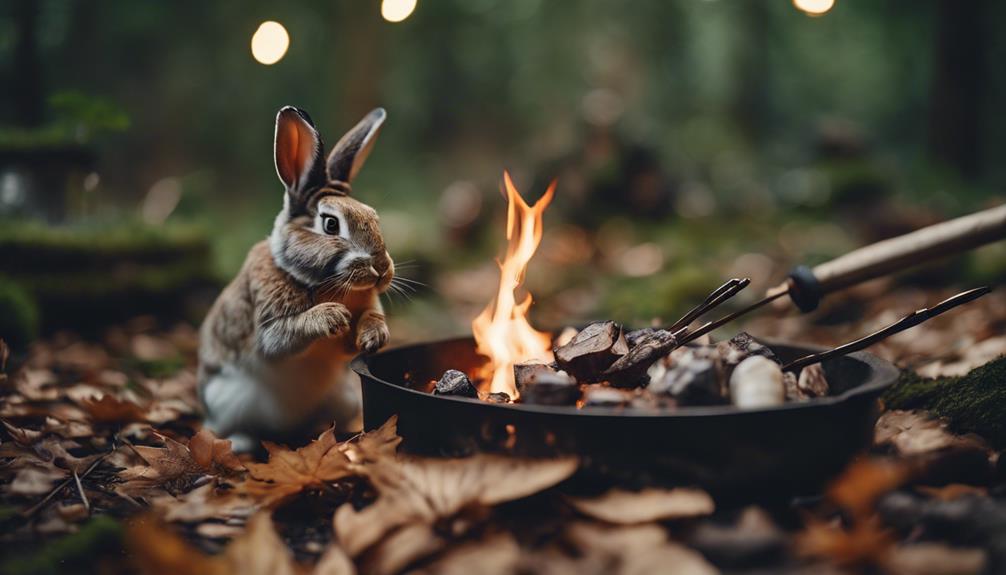
Mastering fire-starting techniques is essential for cooking foraged food and staying warm in the wilderness, and it all begins with selecting the right materials and preparing your fire pit. You'll need dry, fluffy material like dry leaves or grass, and some tinder, such as small twigs or shredded bark.
Here are three essential fire-starting tips to keep in mind:
- Choose the right wood: Look for dry, straight branches about the size of your wrist. Hardwoods like oak or maple burn longer and produce more heat than softwoods like pine or fir.
- Create a fire bed: Clear a circle of about three feet in diameter of any leaves, grass, or other combustible materials. Then, create a fire pit using rocks or by digging a shallow hole.
- Start small: Begin with a small fire and gradually add more wood as it grows. This will help you conserve energy and reduce the risk of the fire getting out of control.
In survival scenarios, knowing how to start a fire can be the difference between life and death. Whether you're building a debris hut, hunting and fishing, or simply trying to stay warm, a well-built fire is vital for long-term survival.
Wilderness Navigation Essentials
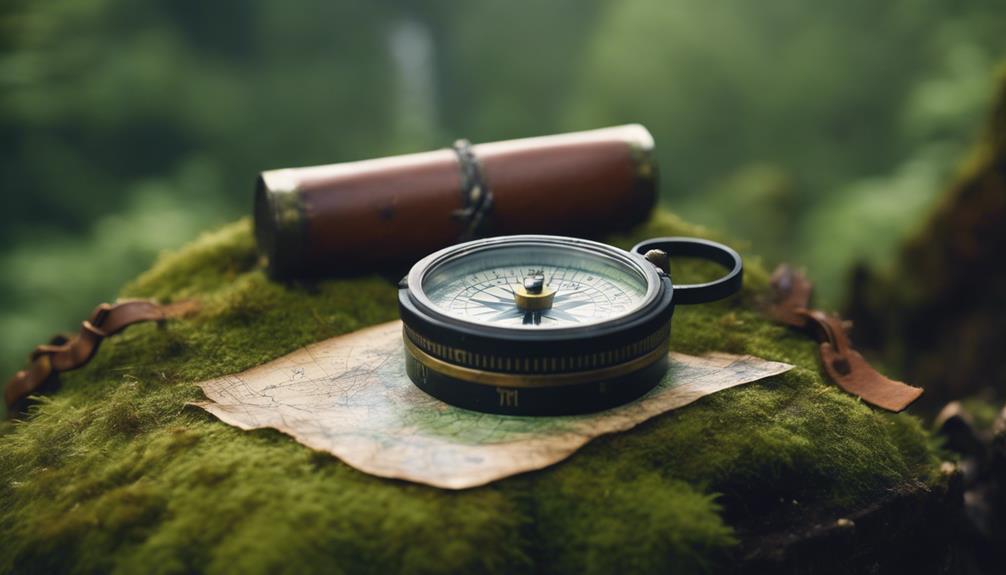
When venturing into the wilderness, it's important that you're able to navigate through unfamiliar terrain, as getting lost can quickly become a matter of life and death. In a survival scenario, knowing how to navigate can mean the difference between life and death. Depending on the parts of the country you're in, you may encounter vastly different landscapes, making navigation even more essential.
To make sure you're able to find your way back to civilization, make sure you're equipped with the necessary skills and tools. A robust shelter is important, but it's pointless if you can't find your way back to it. Remember that relying solely on GPS devices and smartphones can be risky, as they can fail or run out of battery.
Mastering navigation techniques like dead reckoning, triangulation, and pacing will aid you in staying on course. Building a mental map of your surroundings and constantly updating your position will increase your navigation accuracy in challenging terrains. By combining these skills with the right tools, you'll be well-equipped to handle any wilderness navigation challenge.
Frequently Asked Questions
Can You Survive Only Foraging?
You can survive for a while solely on foraged foods, but it's tough; you'll need expert plant ID skills, proper prep methods, and a diverse diet to avoid nutrient deficiencies and energy crashes.
Can You Make Money Foraging?
"Are you ready to turn your passion into profit? You can monetize your foraging skills by selling wild edibles to restaurants, supplying herbalists, or leading foraging tours, making a lucrative business out of it."
What Is the Number One Rule of Foraging?
When you forage, you must correctly identify edible plants to avoid consuming toxic ones, so the number one rule is to positively identify what you pick to guarantee your safety and avoid disastrous consequences.
What Are the Risks of Foraging?
As you venture into the world of foraging, beware of the "uninvited guests" lurking in the wild, such as toxic plants, contaminated areas, and sharp objects, which can lead to poisoning, nutritional deficiencies, and injuries, making caution your trusted companion.
Conclusion
With foraging fundamentals fresh in your mind, you're ready to roam freely, foraging for fare that's fresh and fine.
From forest floor to feasting table, you've mastered the skills to survive and thrive in the wild.
With shelter, snares, and water sourcing savvy, you'll navigate the wilderness with ease.
Fire starting and food prep are now second nature, and navigation essentials are etched in your mind.
You're a foraging phenom, poised to conquer the wild!
Foraging Guides
Can You Forage Wild Garlic in the UK? Find Out Now!
Forage for wild garlic in the UK's woodlands and discover the culinary treasure hiding in plain sight.

You can discover wild garlic in the UK, where it thrives in woodland edge habitats and shaded damp areas, particularly in old woodlands and near water sources, making it abundant in the country's temperate climate. To identify wild garlic, look for its pungent aroma, bulbous perennial plant with long, pointed leaves, and small white flowers. When foraging, positively identify the plant, obtain permission if needed, and harvest leaves and flowers responsibly. Now that you know wild garlic is waiting to be found, learn how to make the most of this culinary treasure and access its nutritional benefits.
Key Takeaways
- Wild garlic thrives in the UK's temperate climate, commonly found in woodland edge habitats, near water sources, and shaded damp areas.
- Positively identify the plant before harvesting to ensure you're picking wild garlic and not a lookalike.
- Obtain permission before foraging in protected areas, and leave enough for wildlife and future foragers to maintain sustainability.
- Harvest wild garlic leaves and flowers responsibly to avoid uprooting plants and causing habitat damage.
- Wild garlic is abundant in old woodlands and near water sources in the UK, making it a readily available foraging option.
What Is Wild Garlic?
You'll likely recognize wild garlic, also known as ramsons, by its pungent aroma, similar to the smell of garlic, wafting from the damp, shady woodlands where it grows abundantly. This bulbous perennial plant is characterized by its long, pointed leaves and small white flowers.
As you explore the woodland, you'll notice that wild garlic emits a strong garlic scent, making it easily recognizable. The good news is that wild garlic is edible, and both its leaves and flowers can be used in various culinary dishes. When foraging for wild garlic, you'll find that it adds a mild garlic flavor to your recipes.
This versatile ingredient is popular among foragers due to its abundance in woodlands, making it an ideal addition to many meals. As you venture into the world of foraging, keep an eye out for wild garlic's distinctive aroma and appearance, and get ready to elevate your cooking with this delicious and accessible ingredient.
Where to Find Wild Garlic
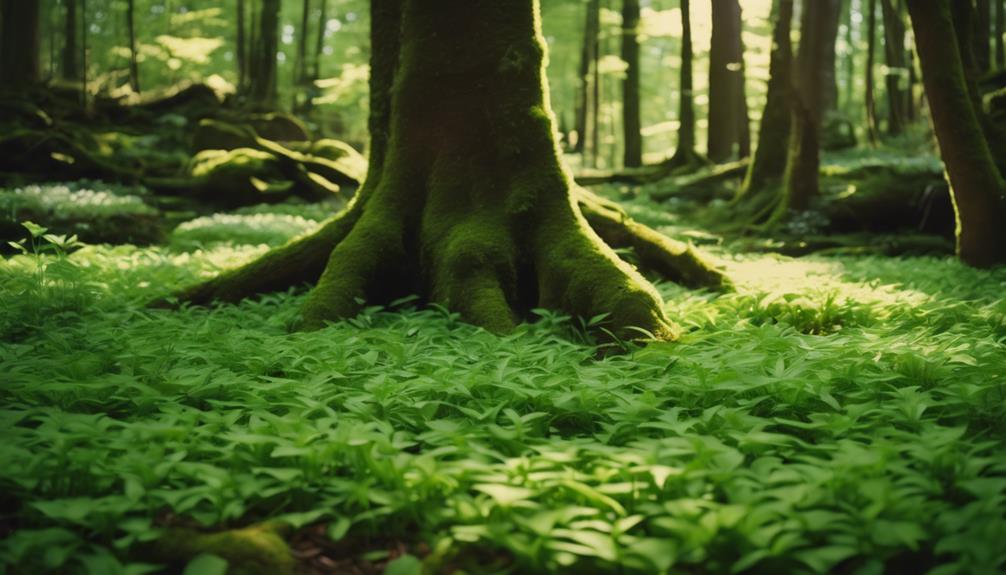
As you start your wild garlic foraging adventure, you'll want to know where to look. You'll typically find it thriving in woodland edge habitats, shaded damp areas, and along stream sides and banks.
Woodland Edge Habitats
When foraging for wild garlic in the UK, head to woodland edge habitats, where the shady, damp conditions create the perfect environment for this pungent plant to thrive. As you wander through the woodland floors, keep an eye out for the distinctive garlic smell that wafts through the air, signaling the presence of wild garlic. During the wild garlic season, these areas are particularly conducive to finding this fragrant herb.
| Location | Tips | Best Time |
|---|---|---|
| Woodland edges | Look for shady, damp areas | March to May |
| Riverbanks | Search near water sources | April to June |
| Damp woods | Follow the fragrant smell | May to July |
When foraging in woodland edge habitats, remember to respect protected sites like National Nature Reserves and Sites of Special Scientific Importance, where foraging is not permitted. Instead, try Downhill Demesne, Fowey Estuary, or Ilam Park and Dovedale, which are known to harbor an abundance of wild garlic. Happy foraging!
Shaded Damp Areas
Head to shaded, damp areas like woodland floors and riverbanks, where wild garlic thrives in the UK's temperate climate. As you explore these environments, keep an eye out for the distinctive garlic aroma that signals the presence of wild garlic. This plant grows best in old woodlands, where the shade and dampness create an ideal environment for it to flourish.
Here's what you might see in these shaded, damp areas:
- Dense clusters of wild garlic growing near the base of trees
- The plant's bright green leaves and delicate white flowers peeking out from beneath underbrush
- The strong, pungent aroma of garlic wafting through the air
- Wild garlic growing alongside other woodland plants like ferns and mosses
- The sound of running water in the distance, as wild garlic often grows near streams and rivers
As you forage for wild garlic in these shaded, damp areas, be sure to check if you're in a protected site like a National Nature Reserve or Site of Special Scientific Importance.
With a little practice and patience, you'll be enjoying the flavors of wild garlic in no time!
Stream Sides & Banks
Follow the gentle curves of streams and rivers, and you'll often stumble upon wild garlic thriving along their banks, where the moist soil and dappled shade create a perfect haven for this pungent plant to flourish.
As you forage for wild garlic, keep an eye out for clusters of vibrant green leaves and delicate white flowers along stream sides and banks. The smell of wild garlic in these areas is a strong indicator of its presence, so take a sniff and see if you can detect that pungent aroma.
Wild garlic loves growing in damp, shady environments, making stream sides and banks ideal habitats. When you find wild garlic in these spots, you can enjoy this versatile and flavorful ingredient in your dishes.
To find wild garlic, simply explore the banks of streams and rivers, and you'll likely stumble upon this tasty treat. So, grab a basket and head out to forage wild garlic along stream sides and banks – your taste buds will thank you!
How to Identify Wild Garlic
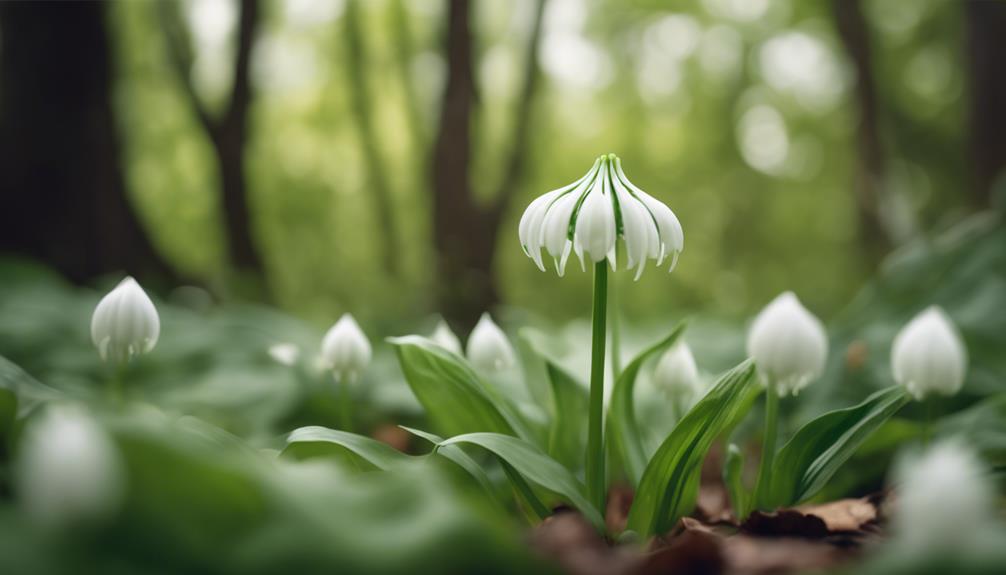
As you venture out to forage for wild garlic, it's crucial to know what to look for in order to guarantee you're picking the right plant.
You'll want to examine the leaves, stems, and bulbs, as well as take in the aroma and appearance of the flowers.
Leaf Shape and Size
When foraging for wild garlic, you'll typically find leaves that are long, pointed, and smooth, with a bright green color and a shiny appearance. This distinct wild garlic look is a key identifying feature, especially when distinguishing it from other similar-looking plants.
Here are some key characteristics to look for:
- Leaves grow in clumps along the woodland floor, ranging in size from small to medium.
- Unlike lily of the valley, wild garlic leaves don't have toothed edges and emerge from the base of the plant.
- Young leaves are edible and can be used in various culinary dishes, ranging from salads to soups.
- The distinct garlicky smell of wild garlic leaves is a key identifying feature, helping foragers distinguish it from other plants.
- Allium ursinum, also known as wood garlic, has leaves that are characteristic of the wild garlic family.
Stem and Bulb Features
Your search for wild garlic leads you to examine the stem and bulb features, which are essential in identifying this edible plant.
As you forage for wild garlic, take note of the stem, which supports the leaves and eventually, the white flowers. The stem is an important feature to examine, as it can help distinguish wild garlic from other plants. Wild garlic stems are typically slender and grow from the base of the plant, which is where the bulb is located.
The bulb is a vital feature to identify, as it's a key characteristic of wild garlic. When you're foraging, gently dig around the base of the plant to expose the bulb, which is usually surrounded by small bulbils. These bulbils will eventually grow into new plants, allowing wild garlic to spread.
Flower and Smell Characteristics
You can identify wild garlic by its tiny white flowers that grow in clusters on thin stalks, which aren't only edible but also a key distinguishing feature of this plant. When you're out foraging, finding these flowers is a great way to confirm you've got the right plant. But it's not just the flowers that give it away – the smell is also a dead giveaway.
Here are some key characteristics to look out for:
- Tiny white flowers that grow in clusters on thin stalks
- Strong garlic smell that's unmistakable
- Long, pointed green leaves with untoothed edges
- Often found in dense clumps, carpeting woodland floors
- Leaves and flowers are edible and can be used in cooking
As you forage for wild garlic, remember that the smell is a key characteristic. If you find a plant that looks like wild garlic but doesn't have that strong garlic smell, it's likely not the real deal.
Responsible Foraging Techniques

In order to promote sustainable foraging practices, it's important to adopt responsible techniques when harvesting wild garlic in the UK. You'll want to positively identify the plant to avoid mistakenly picking something else. Before heading out, make sure you have permission to forage in protected areas, respecting conservation efforts. Remember, it's crucial to leave enough wild garlic for wildlife and future foragers, while avoiding habitat damage.
When foraging, use responsible techniques like only picking leaves and flowers, avoiding uprooting the plant, and not taking too much from one area. This ensures the wild garlic population remains healthy and thrives. Note that foraging isn't permitted in National Nature Reserves and Sites of Special Scientific Importance in the UK.
Cooking With Wild Garlic

After harvesting fresh wild garlic, it's time to explore its culinary potential in a variety of dishes. You've foraged wild garlic, now it's time to get creative in the kitchen! Cooking with wild garlic adds a unique twist to dishes and brings a taste of the outdoors to your table.
Here are some ideas to get you started:
- Use the leaves in pesto, soups, salads, and risottos for a fresh, seasonal flavor.
- Add the flowers as a garnish or in salads for a pop of flavor – they're edible too!
Take advantage of wild garlic's milder taste, which makes it versatile for cooking.
Foraging wild garlic allows you to incorporate fresh, seasonal flavors into your meals.
Get inspired by Alamy Stock's culinary creations featuring wild garlic and experiment with new recipes!
Health Benefits and Uses
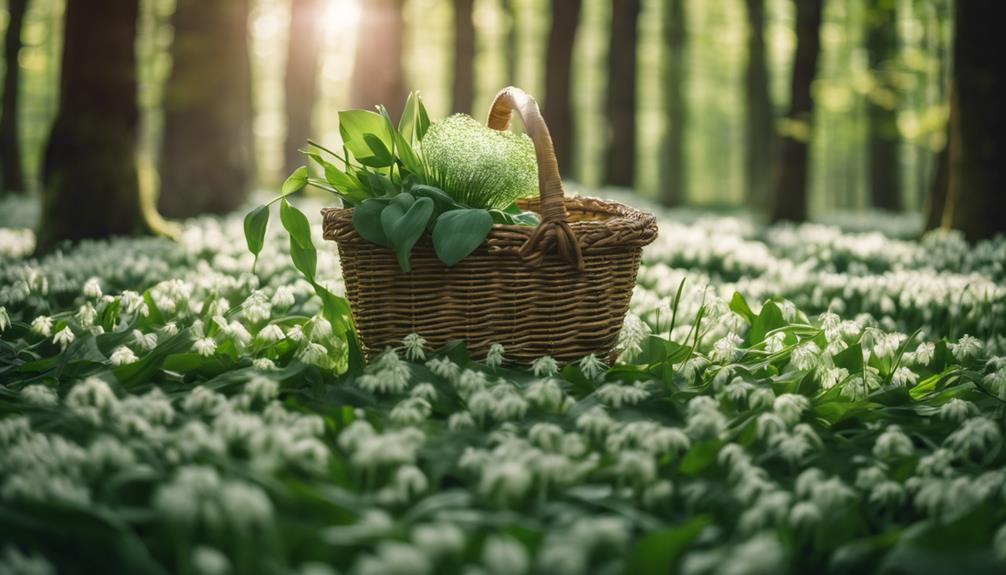
Beyond its culinary appeal, wild garlic has been prized for its medicinal properties and potential health benefits. As you explore the world of foraging, you'll discover that wild garlic is rich in vitamins and minerals, making it a nutritious addition to your meals.
Traditionally, wild garlic has been used in medicine to treat rheumatic problems and as a spring tonic. You can reap its health benefits by incorporating it into your diet, as it's known to lower cholesterol and blood pressure.
As a versatile ingredient, wild garlic has a milder taste compared to traditional garlic, making it suitable for various recipes. Its culinary uses extend beyond cooking, as it can be used in salads, soups, and even pesto.
With its numerous health benefits and culinary uses, it's no wonder wild garlic has been a staple in traditional medicine for centuries. By incorporating wild garlic into your diet, you can enjoy its numerous benefits while exploring the world of foraging.
Frequently Asked Questions
Are You Allowed to Pick Wild Garlic in the Uk?
You're allowed to pick wild garlic in the UK, but check local regulations first, and always forage responsibly, as uprooting without permission is illegal, and some protected areas may have specific rules.
Where Can I Forage Wild Garlic Uk?
You're literally spoiled for choice when it comes to foraging wild garlic in the UK! Head to damp, shady woods, or try hotspots like Downhill Demesne, Fowey Estuary, or National Trust sites like Erddig and Hardwick Hall.
Is Wild Garlic Out Yet?
You're wondering if wild garlic is out yet? As we're in March, the answer is yes! Wild garlic is emerging, and you can start foraging for it in shady woodland areas with damp floors.
When to Pick Wild Garlic in Scotland?
When you're foraging in Scotland, you'll want to pick wild garlic from March to May, when the leaves are young and vibrant, and the garlic scent is strongest, ensuring a fresh and flavorful addition to your dishes.
Conclusion
As you conclude your wild garlic foraging adventure, remember you've discovered a treasure trove of flavors and health benefits!
With responsible foraging techniques and proper identification, you'll be cooking up a storm in no time.
And let's be real, your taste buds will be doing the happy dance a million times over!
-
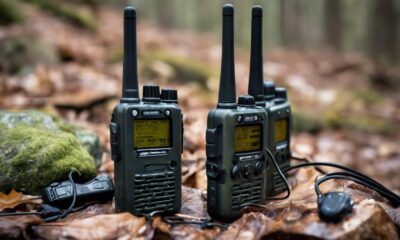
 Coastal Foraging2 weeks ago
Coastal Foraging2 weeks ago15 Best GMRS Radios for Preppers: Stay Prepared and Connected in Any Situation
-

 Coastal Foraging2 weeks ago
Coastal Foraging2 weeks ago15 Best Foods for Preppers to Stock Up on Now
-
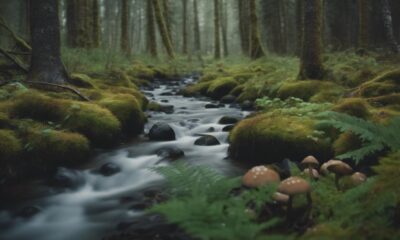
 How to Forage2 weeks ago
How to Forage2 weeks agoUnlock Nature’s Bounty: How to Forage in Alaska Like a Pro!
-

 Foraging Guides6 days ago
Foraging Guides6 days agoCan You Eat Forage Turnips? Uncover the Edible Secrets!
-
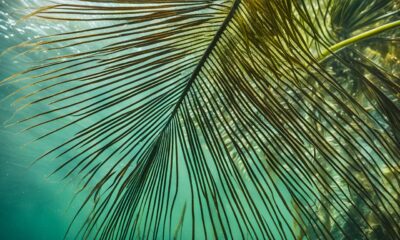
 Coastal Foraging2 weeks ago
Coastal Foraging2 weeks agoCalifornia Kelp Identification: A Seaside Guide
-
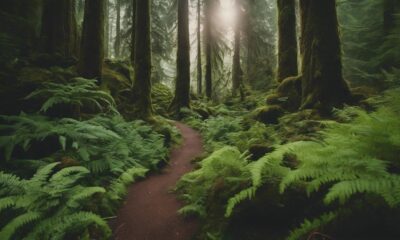
 Vetted2 weeks ago
Vetted2 weeks ago15 Best Pacific Northwest Foraging Spots to Explore in 2024
-

 Survivalism2 weeks ago
Survivalism2 weeks agoPreppers Netflix: Top Shows to Watch for Survival Tips!
-
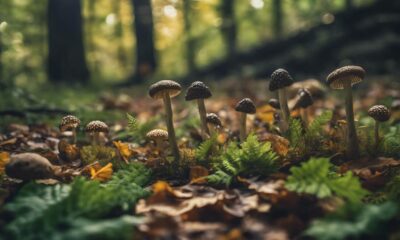
 How to Forage2 weeks ago
How to Forage2 weeks agoMinnesota Foraging Fun: Discover Wild Edibles Everywhere!
















